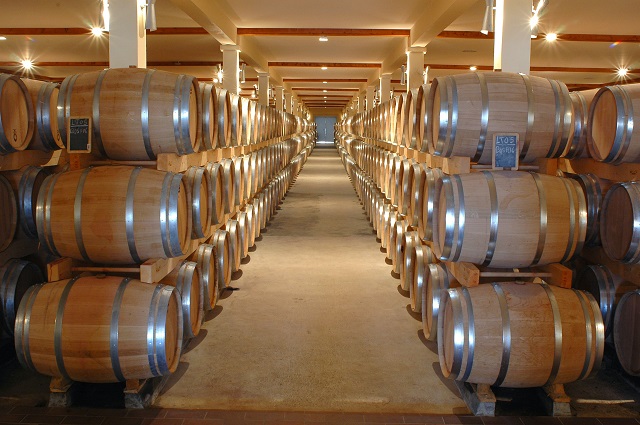Posted: May 13, 2023

“It all came about at 11:30PM on a random Wednesday.”
Penelope Bourbon CEO and founder Michael Paladini admitted that late-night calls are a regular occurrence for him. After his wife goes to bed, the kids are asleep and there are no emails hitting his inbox, he has time to get creative. One of these evening brainstorming sessions was with Robert Crandell, a regional sales manager for Tonnellerie Radoux and Pronektar. Radoux is a French cooperage that has been making barrels for decades. The company has been operating in the US since 1994, based in wine country California. What’s more, Radoux has conducted extensive research into the chemical composition and tannins of French oak.
Since 2008, Radoux has completed over 300 trials containing over 10 million analyses to observe polyphenols in the wood that can impact the appearance, taste and smell of wine. The result is a tool that can instantly measure these properties with Near Infrared Spectrometry, rather than using the time-consuming process of taking random samples from various batches of staves. The technology is called OakScan.
All of the variation in French oak can lead to unintended results without careful planning. Combine that in with the fact that the wood is more expensive than American oak and companies using it to age wines and spirits can greatly benefit from knowing how their liquid is going to react to the wood. It’s long been known that trees from different forests that are made into barrels will have different chemical compositions (the concept of terroir), and thus different levels of tannins. There can also be significant variation in trees just a few feet apart or from staves made from different parts of the same tree. What’s more, there can be distinctions in the grain width, which affects the extraction time for getting the tannins out of the wood.
“Even if you’ve gone to great lengths and you bought wood from the same forest, you still aren’t getting the same sort of precision and consistency [as with OakScan],” Crandell said. When Radoux uses OakScan to analyze staves bound for production, each piece of wood is assigned a barcode and a letter corresponding to its “tannic potential,” according to the cooperage. This not only helps with sorting, but it allows the company to build barrels with a specific polyphenolic index (PI), ensuring the wood is suitable for the style a winery or vineyard is trying to make. And since every stave is scanned, there’s uniformity of the tannin content of each barrel and all the data makes the end result repeatable.
OakScan also allows customers to select wood from different forests, but not by sourcing actual staves from those places. Instead, Radoux can build the tannin profile and replicate the terroir in a much more consistent way.
By Billy Steele
Source: engadget.com
Date Published: May 12, 2023
Go-Wine's mission is to organize food and beverage information and make it universally accessible and beneficial. These are the benefits of sharing your article in Go-Wine.com